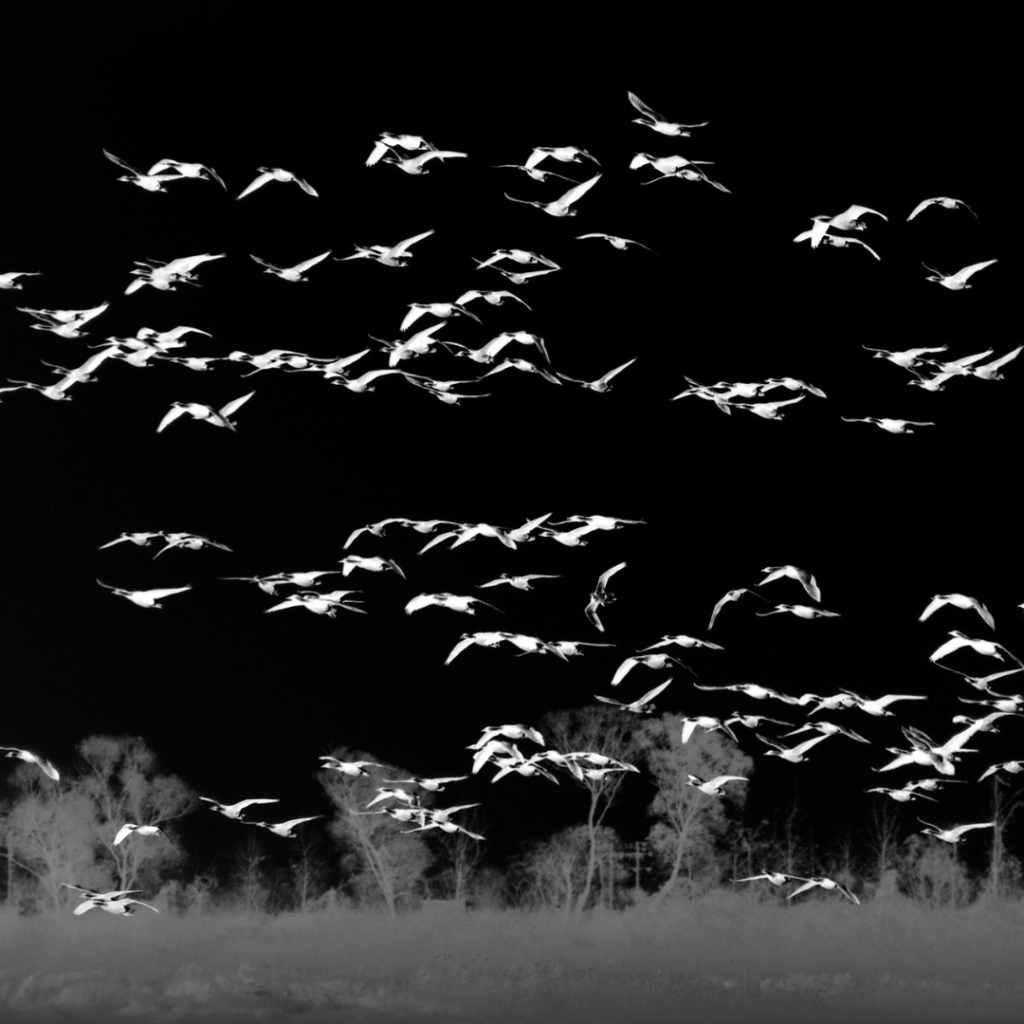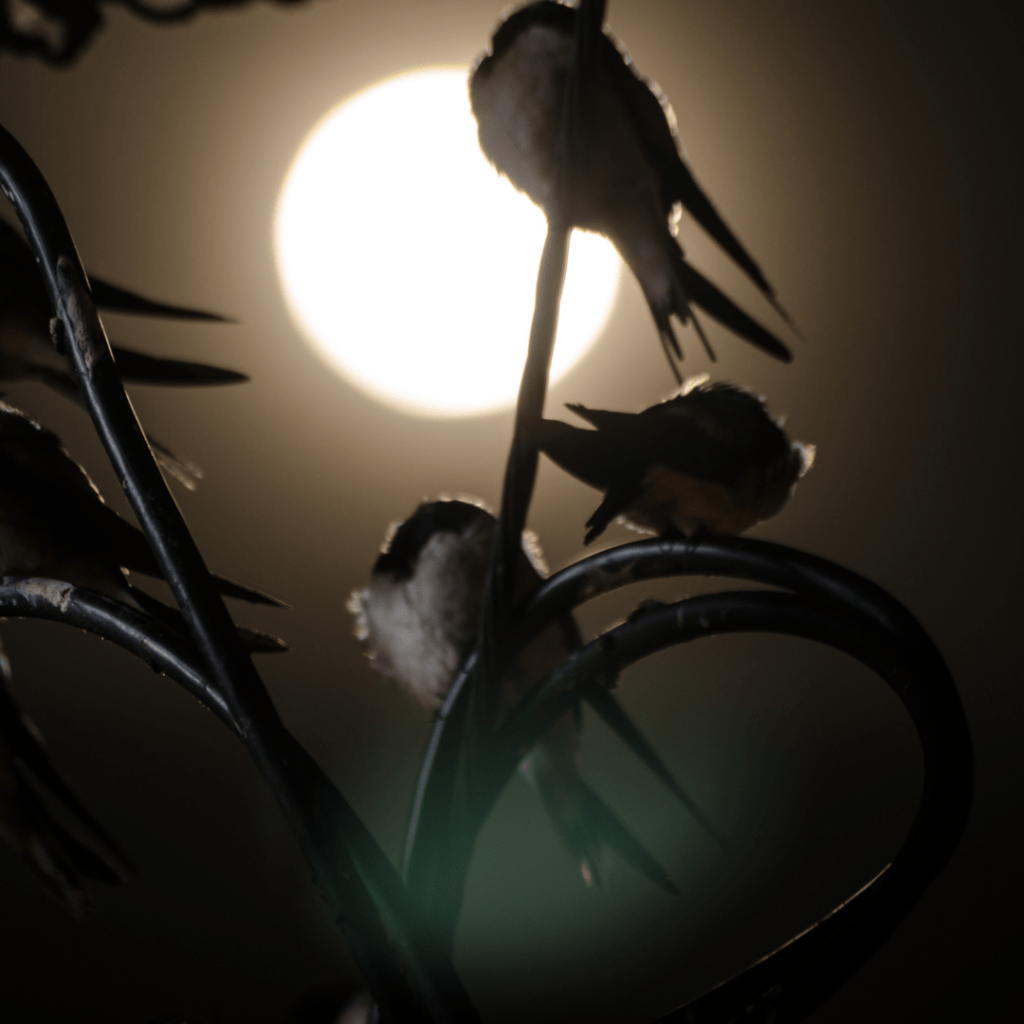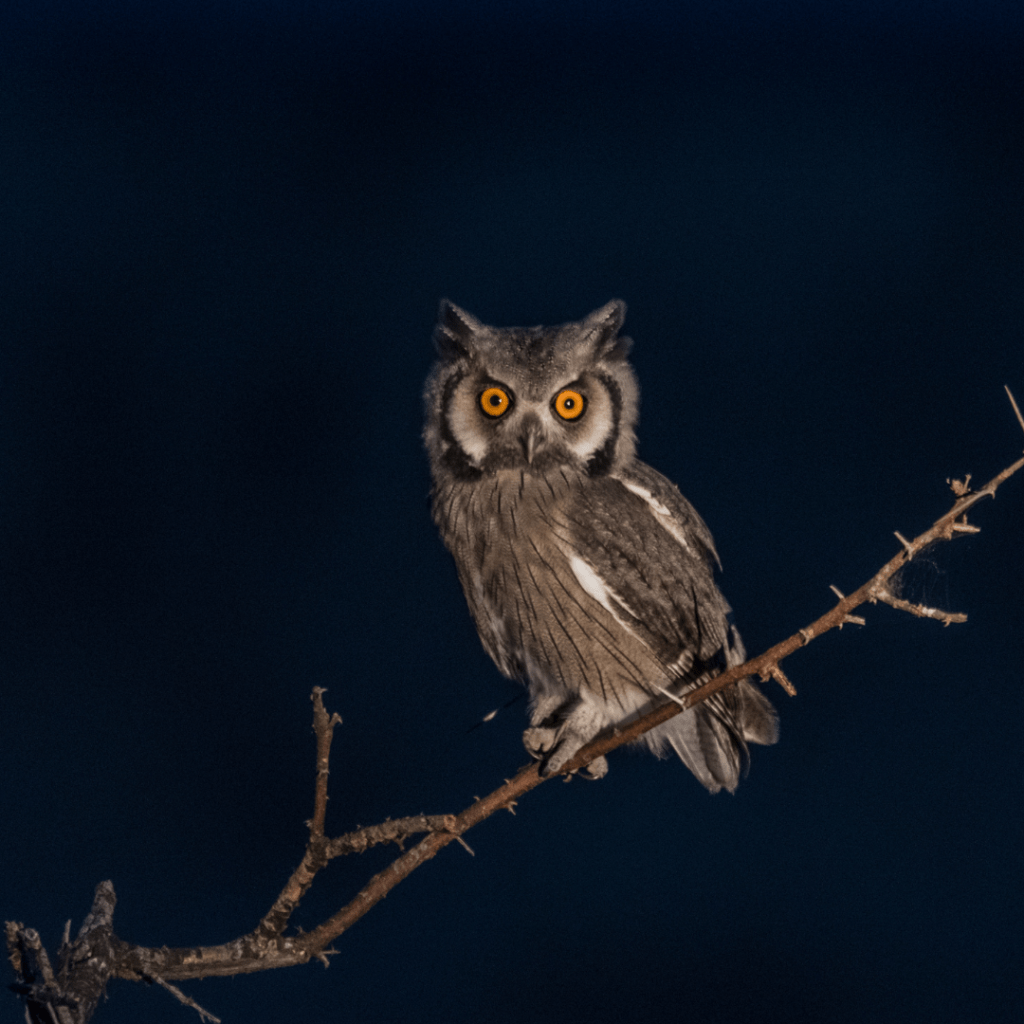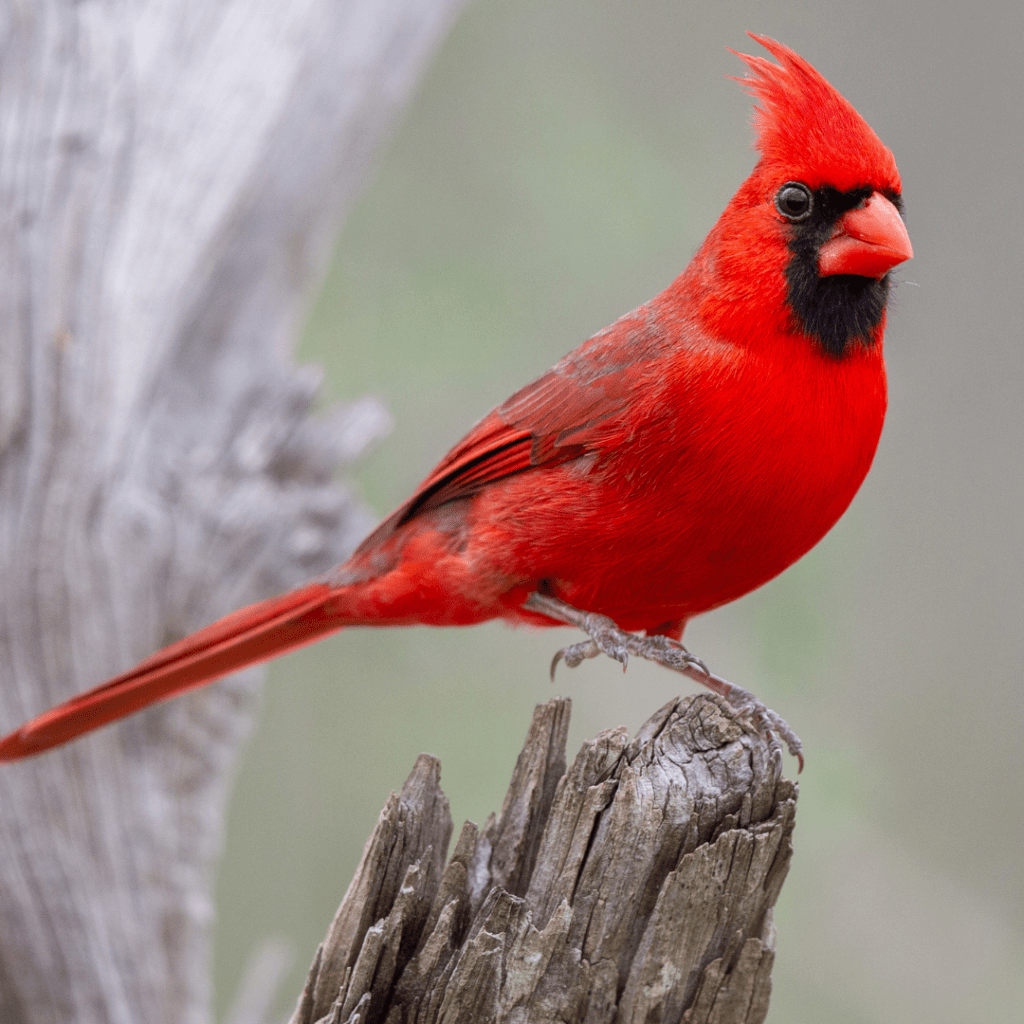Birds can be seen flying all over the place during the day, but do birds fly at night? What are birds up to while we are asleep?
Well, like most questions bird-related, it is well researched by many top ornithologists and avid bird watchers alike.
With roughly 9000 to 10000 species of birds, there are some that fly at night and are nocturnal, but most birds are diurnal meaning they are asleep at night and active during the day. About 30% of birds are nocturnal (active at night asleep during the day) so they fly at night!
Why do Birds fly at night?
Since nocturnal birds are asleep during the day, the night is when they are up and looking for food, finding mates, and doing everything else birds are known for.
You may have noticed that about an hour before sundown most of your common feeder birds will start to disappear.
This is very common, and I am sure you have seen it happen, this is for one main reason, safety. Birds have great vision, but as the day comes to an end diurnal bird’s vision diminishes rapidly in the dark.
So, as the sun comes to set most birds have a hard time seeing. Therefore, they tend to start looking for a place to sleep in the last hour of sunlight.
Birds often go to sleep in bushes, trees, abandon buildings, nest boxes, and various other locations that they see as safe.
But, as the sun comes to set this is when the nocturnal birds are waking up.
Nocturnal birds such as owls have great low light vision, which makes it harder for them to see during the day, but they triumph over diurnal birds during the night.

Where do Birds go at night?
The main reason why you won’t see or hear many birds active at night is their vision. Most diurnal birds can’t see very well during the day so they typically find safety during the end of the day to sleep.
It is a dangerous world out there, and with one of their senses deteriorating at night, it makes sense that they avoid it.
This happens with a lot of animals and birds, in nature everything is out to get them. Being blinded by the night sky makes it harder to find food, mate, and most importantly avoid predators.
This is why you typically won’t see many birds active at night, even though you may not see them there are still some nocturnal birds that flourish in the darkness.
How to Spot Birds In the Night

The thrill of seeing a new bird is something that all of us avid bird watchers look forward to!
Nocturnal birds are more of a feat, it is hard enough to spot rare birds in the day with clear skies, but it can become a different game when looking for nocturnal birds that are hidden by the cloak of darkness.
If you are up at night you probably won’t be able to see many birds, not only because it is dark but because they are hard to spot. Many night-time birds match the color of the night and have adapted to be dark to hide in the night sky!
If we take a look at a few nocturnal birds such as the nightjars, nighthawk, and Tawny Frogmouths you will see that they all share something in common.
They are mostly black or dark grey, this is something to note as their natural camouflage in the dark makes them even harder to identify.
If you are wanting to see some nocturnal birds then I would recommend picking an open field or semi-open woodland. Somewhere where you can see for quite a ways uninterruptedly.
Then listen out, since your vision will be a bit impaired from the dark it is best to rely on your other sense. Birds make a lot of noise, so listen out for them and look in the direction of the noise.
As for most bird watching adventures bring a trusty pair of binoculars, these will help you spot them out a bit easier.
If you have access, the best tool to spot nocturnal birds is a night vision camera or some sort of night vision tool.
Even if you are fully prepared night vision will be your best bet to be able to see and identify those nocturnal birds that may be trying to evade you!
Nocturnal vs Diurnal Bird Examples
As we covered previously the birds that are flying at night are nocturnal. So, to better understand them and their diurnal counterparts let’s look at a few bird species that do fly at night.
Nocturnal
Owls
These amazing, beautiful birds are the most common nocturnal birds. As for most nocturnal birds they aren’t always asleep during the day, but your best bet to see them is at night.
Owls have an acute vision that has adapted to the darkness. This gives them the ability to hunt amazingly at night.
Owl’s diets typically consist of small rodents, rabbits, frogs, and various other small animals. Since most of their diet consists of nocturnal animals they, in turn, have the advantage to be nocturnal and have heightened night vision.

Mice, rabbits, and even frogs are nocturnal. They are all up and eating, and mating during the cover of darkness. Owls use this to their advantage by slowly and quietly flying around waiting for a time to pick up their next meal.
As well as amazing vision many nocturnal birds also rely heavily on their ears. This is an adaptation that has helped owls and many nocturnal birds find food at night.
Diurnal
Cardinal
These striking red birds can be seen at feeders all over the world. But, when it comes time for the night, they all disappear.
Where do they go? Since cardinals are diurnal and eat seeds and organic food they haven’t had to adapt to seeing in the dark.
This leaves them at a disadvantage when it comes time for night. Since they can’t see very well cardinals don’t fly at night, and instead, use the last hours of sunlight to fly around looking for a perch or safe place to sleep.

Can birds see at night?
Yes and no it just depends on the species, most birds that are diurnal have very limited vision at night. On the other hand, nocturnal birds have excellent night vision and can see at night clearly!
Do Birds and Bats get along?
Well you may be wondering since some birds are active at night do birds and bats get along? For the most part, they don’t have any hatred towards each other or violence.
As with most animals, birds can be quite territorial, so if a bat comes too close there may be hostile tension, but nothing too drastic.
Also, birds and bats have different patterns, eat different things, and ultimately are completely different!
That being said it is pretty rare to see birds and bats interacting together.
Wrap up
So yes, birds do fly at night about 30% of them, so if you are out in the wild birding late into the afternoon you may just grab a glimpse of the beautiful world of nocturnal birds.
Keep an ear out and start looking for them as they are out there. Do you have a crazy nocturnal birding story? Please share it with us! We always love to learn from the amazing birding community out there!

James has always been an avid outdoorsman. Since a kid, he kept a journal of all the different birds and species he saw. Now he wants to share his passion with other birders with Happy Birding!
